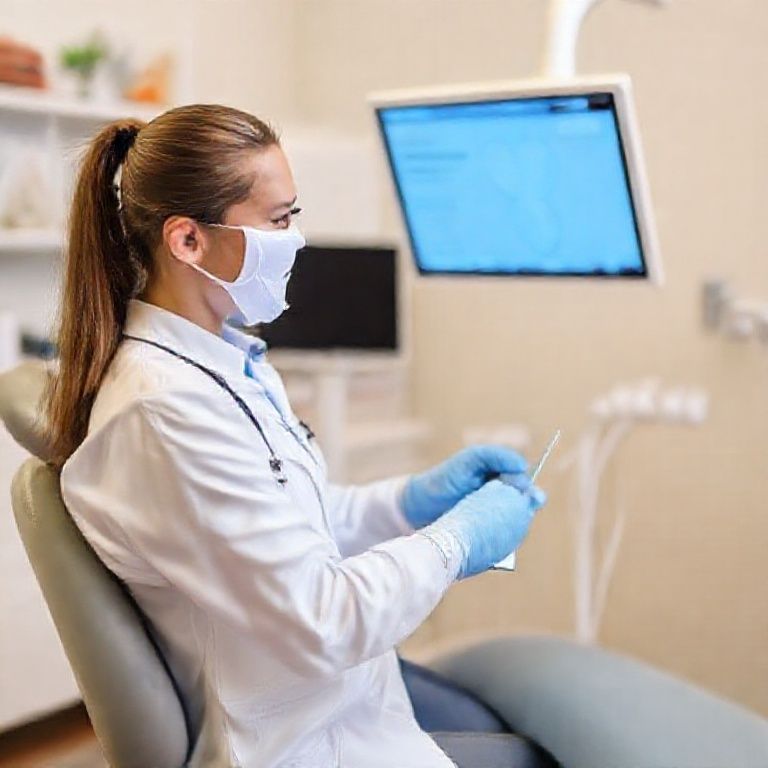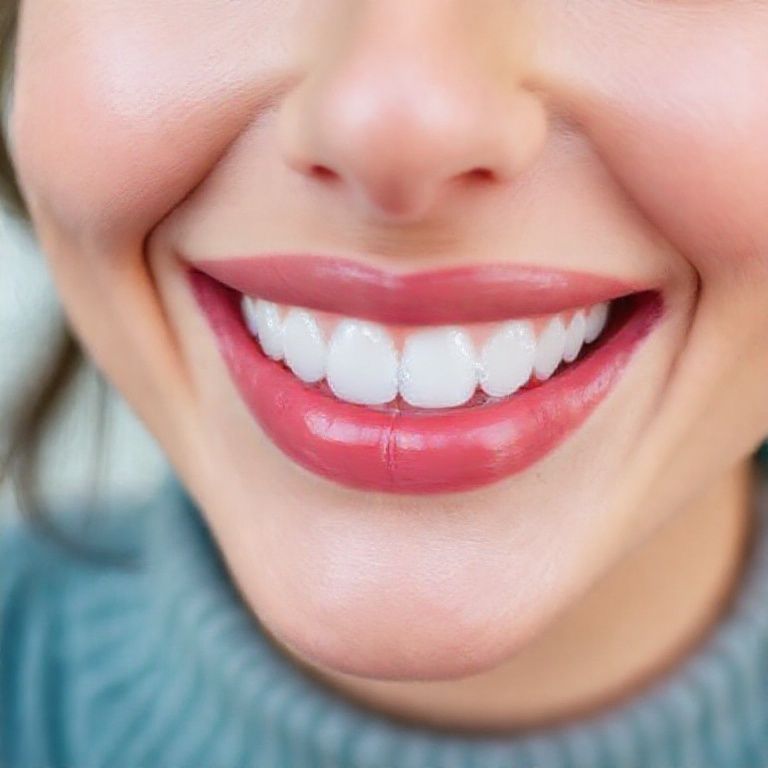A Comprehensive Guide to Free Dental Clinics in Maryland
The ability to smile, chew without pain, and maintain oral health is a cornerstone of overall well-being, self-esteem, and professional success. Yet, for hundreds of thousands of Marylanders—the working poor, uninsured adults, seniors on fixed incomes, and children from low-income families—comprehensive dental care remains a distant luxury. The consequences of this access gap are profound and ripple far beyond a toothache. Untreated dental disease can lead to emergency room visits for preventable pain, missed days of work and school, systemic infections, and a devastating loss of confidence. In a state as prosperous as Maryland, this silent epidemic of dental disparity persists, hidden in plain sight.
However, amidst this challenge, a network of compassion and care exists. A dedicated coalition of non-profit organizations, public health departments, dental schools, and volunteer professionals work tirelessly to bridge this gap. This article serves as the most exhaustive and detailed guide available to free and low-cost dental clinics across the state of Maryland. It is more than just a directory; it is a roadmap designed to empower you with the knowledge, strategies, and resources to navigate the system and access the critical dental care you or your loved ones deserve. We will delve into the types of clinics, the services they offer, the intricate details of eligibility, and provide a county-by-county resource list to help you find a clinic near you.

1. Understanding the Landscape of Charitable Dental Care in Maryland
The ecosystem of free dental care in Maryland is not a monolithic entity but a diverse tapestry of organizations operating under different models, each with unique strengths and limitations. Understanding these models will help you set realistic expectations and identify the right type of resource for your needs.
-
Federally Qualified Health Centers (FQHCs): These are community-based health centers that receive federal funding to provide primary care services in underserved areas. Most FQHCs have an integrated dental department. They operate on a sliding fee scale based on income and family size, which can make care virtually free for those at the lowest income levels. They are a cornerstone of the safety-net system and often offer the most consistent, long-term care. Examples include Chase Brexton Health Services and Health Care for the Homeless.
-
Non-Profit Free Clinics: These are standalone organizations, often faith-based or community-driven, that rely heavily on grants and private donations. They are typically staffed by volunteer dentists, dental hygienists, and assistants. Appointments can be limited, often operating on specific days of the month or on a first-come, first-served basis. The scope of services may be more focused on urgent care (extractions, fillings) rather than comprehensive restorative work.
-
Dental School Clinics: The University of Maryland School of Dentistry in Baltimore is a massive resource. As a teaching institution, it provides dental care at significantly reduced costs. Procedures are performed by dental students under the close supervision of licensed, experienced faculty. While not “free,” the costs are often 30-50% less than in a private practice, making it an excellent option for low-cost, comprehensive care. The trade-off is that appointments can take longer.
-
Community Health Days & Missions of Mercy: These are large-scale, temporary dental clinics that provide free care to anyone who shows up, typically without eligibility checks. The Mission of Mercy (MOM) events, often held at fairgrounds or large venues, can treat thousands of patients over a weekend, providing cleanings, fillings, and extractions. These are crucial for addressing acute needs but are not a source for ongoing care.
-
Government Public Health Dental Clinics: Some county health departments operate their own dental clinics, often targeting specific populations like children enrolled in Medicaid or pregnant women. These clinics are a critical part of the public health infrastructure.
2. Who Qualifies for Free Dental Care? Demystifying Eligibility Requirements
Eligibility is the most common point of confusion and frustration. There is no single standard, but most clinics use a combination of the following criteria:
-
Income: This is the primary factor. Most clinics require proof that your household income falls at or below 200% of the Federal Poverty Level (FPL). Some may be stricter (150% FPL) or more lenient (250% FPL). You will need to provide recent pay stubs, tax returns, or proof of government assistance.
-
Residency: You will almost always need to prove you live in the county or region the clinic serves. A driver’s license, utility bill, or lease agreement is standard.
-
Insurance Status: Free clinics are designed for the uninsured and underinsured. If you have Medicaid (see Section 7), you will typically be directed to a provider who accepts it. If you have private insurance but cannot afford the co-pays or deductibles for major work, some clinics may still consider you.
-
Other Factors: Some clinics prioritize specific groups, such as:
-
Children under 18
-
Pregnant women
-
Seniors (65+)
-
Individuals with disabilities
-
Veterans
-
Patients with a specific, urgent dental emergency (e.g., facial swelling, abscess)
-
3. What Services Are Typically Offered? From Cleanings to Emergencies
The range of services varies dramatically. It is crucial to understand that most free clinics are not able to provide complex cosmetic or elective procedures like veneers, implants, or orthodontics (braces). Their goal is to address pain, prevent disease, and restore basic function.
-
Routine Preventive Care: This is the foundation of dental health and includes dental exams, X-rays, professional cleanings (prophylaxis), and fluoride treatments. These services are commonly offered.
-
Basic Restorative Care: To treat decay, clinics often provide fillings (amalgam or composite) and simple extractions (tooth removal).
-
Emergency Care: This is a primary focus for many free clinics. Services include treating toothaches, draining abscesses, and managing dental trauma.
-
Limited Advanced Care: Some clinics, particularly FQHCs and dental schools, may offer more advanced services like root canals (on anterior teeth), dentures, and partials, though there may be long waiting lists for these due to high demand and cost.
-
Patient Education: A key component is teaching patients about proper oral hygiene techniques, nutrition, and the importance of regular care to break the cycle of neglect.
4. How to Find a Free Dental Clinic in Maryland: A Step-by-Step Guide
-
Self-Assess Your Needs: Is this a routine check-up or a painful emergency? This will determine whether you can wait for an appointment or need to seek an urgent care clinic or event.
-
Gather Documentation: Start collecting proof of income (pay stubs, benefit statements), proof of residency (lease, utility bill), and a form of photo ID.
-
Use This Guide’s Directory: The directory below is an excellent starting point. Identify clinics in your county.
-
Contact Clinics Directly: This is the most critical step. Call the clinic. Be prepared for busy signals or voicemails, as these lines are often overwhelmed. Be polite and patient with the staff.
-
Ask Key Questions:
-
“Are you currently accepting new patients?”
-
“What are your income eligibility requirements?”
-
“What documents do I need to bring?”
-
“What services do you offer?”
-
“Do I need an appointment, or is it walk-in?”
-
“Is there a waiting list, and if so, how long is it?”
-
-
Explore All Avenues: If one clinic cannot help you, ask if they can refer you to another. Also, explore dental school clinics and FQHCs with sliding scales.
5. Comprehensive Directory of Free and Low-Cost Dental Clinics by County/Region
The following directory provides a detailed, though not exhaustive, list of resources. Always call ahead to verify all information.
Maryland Free Dental Clinic Overview
| Clinic Name | County/City | Primary Model | Key Services | Eligibility & Notes | Contact (Example) |
|---|---|---|---|---|---|
| Mission of Mercy Mobile Clinic | Statewide | Mobile Free Clinic | Extractions, Fillings, Cleanings | No eligibility; first-come, first-served at event sites. | (410) 837-5531 |
| University of MD School of Dentistry | Baltimore City | Dental School | Comprehensive (Low-Cost) | Reduced fees; all services performed by students. | (410) 706-7101 |
| Health Care for the Homeless | Baltimore City | FQHC | Preventive, Restorative, Dentures | Individuals experiencing homelessness; sliding fee scale. | (443) 703-1300 |
| Maryland Mission of Mercy (MOM) | Various | Pop-Up Free Clinic | Extractions, Fillings, Cleanings | Large annual events; check website for dates/locations. | www.missionofmercy.org/md |
| Grassroots Crisis Intervention | Howard County | Free Clinic | Emergency Extractions, Exams | Low-income, uninsured county residents; by appointment. | (410) 531-6677 |
Baltimore City & Baltimore County
-
Marian House Dental Clinic (Baltimore City): A unique clinic serving women who are in transition from homelessness, offering a full range of dental services in a supportive environment. Requires referral from a case manager.
-
The Baltimore County Department of Health Dental Program (Baltimore County): Focuses primarily on children enrolled in Medicaid but also provides limited services for low-income adults on a sliding scale at its Eastern Avenue location.
Montgomery County & Prince George’s County
-
Community Clinic Inc. (Montgomery & PG Counties): A leading FQHC with multiple locations (Gaithersburg, Silver Spring, Langley Park) offering integrated medical and dental care on a sliding fee scale. They are a primary access point for uninsured residents.
-
La Clinica del Pueblo (Prince George’s County): While based in DC, they serve a significant Latino and immigrant population from PG County, providing culturally competent dental care on a sliding scale.
Anne Arundel County & Howard County
-
The Arundel Free Dental Clinic (Anne Arundel County): Operates by appointment on specific evenings, providing free emergency and basic restorative care to low-income, uninsured adults.
-
Howard County Health Department Dental Clinic (Howard County): Provides services to children with Medicaid and a limited number of low-income adults on a sliding fee scale. Appointments are essential.
Southern Maryland (Calvert, Charles, St. Mary’s)
-
MedStar St. Mary’s Hospital Dental Clinic (St. Mary’s County): Offers comprehensive dental services to children and adults with Medicaid and to low-income, uninsured patients on a sliding scale.
-
The Civista Medical Center Dental Clinic (Charles County): Associated with the hospital, this clinic provides care to pediatric Medicaid patients and has programs for qualifying low-income families.
Western Maryland (Allegany, Garrett, Washington, Frederick)
-
The Frederick County Health Department Dental Clinic (Frederick County): Serves children with Medicaid and offers a sliding fee scale for low-income, uninsured county residents for basic and emergency care.
-
Western Maryland Health Care System Dental Clinic (Allegany County): Provides care to veterans and, in some cases, to the general community on a limited basis. Inquiring directly is necessary.
Eastern Shore (Caroline, Cecil, Dorchester, Kent, Queen Anne’s, Somerset, Talbot, Wicomico, Worcester)
-
Choptank Community Health System (Multiple Eastern Shore Counties): A critical FQHC with locations in Dorchester, Caroline, Talbot, and Queen Anne’s counties. They provide comprehensive medical and dental care on a sliding fee scale and are often the only dental provider for miles.
-
The Wicomico County Health Department Dental Clinic (Wicomico County): Focuses on services for children with Medicaid but can provide referrals and limited emergency services for adults.
6. Preparing for Your Dental Appointment: A Checklist for Success
To make the most of your visit, come prepared.
-
Documents: Photo ID, Proof of Residency, Proof of Income for all household members, Insurance Card (if any).
-
Medical & Dental History: A list of all medications, allergies, and previous dental work.
-
List of Questions/Concerns: Write down your top 2-3 dental concerns so you don’t forget to mention them.
-
Arrive Early: Plan to arrive at least 15-30 minutes early to complete any remaining paperwork.
-
Be Patient and Flexible: Understand that the clinic is likely understaffed and serving many people. Your patience and gratitude are appreciated.
7. Beyond the Clinic: State and Federal Assistance Programs (Medicaid/MCHP)
In Maryland, the Medicaid program (known as Maryland Health Choice) provides dental benefits for all enrolled children under 21. This is a legally mandated benefit (EPSDT) and can cover a wide range of services. For adults, Medicaid dental coverage is extremely limited, typically covering only emergency extractions and exams in cases of pain or infection. There is ongoing advocacy to expand these benefits. If you or your child qualifies for Medicaid, this can be your ticket to consistent, low-cost dental care with a network of providers. Apply through the Maryland Health Connection website or your local Department of Social Services.
8. The Power of Volunteerism: How You Can Help
The existence of these clinics depends on community support. If you are not in need of care but wish to help, consider:
-
Volunteering: Dentists, hygienists, and assistants are always needed. Non-clinical volunteers are also crucial for patient intake, translation, and administrative tasks.
-
Donating: Financial contributions are the lifeblood of these organizations, allowing them to purchase supplies and pay for overhead. Even small donations make a difference.
-
Spreading the Word: Share this article and other resources with community centers, places of worship, and social service agencies to ensure those in need know where to turn.
9. Conclusion: A Healthier, Happier Maryland is Within Reach
Access to dental care is not a privilege but a fundamental component of public health. The network of free and low-cost clinics across Maryland represents a powerful force for good, alleviating pain, restoring dignity, and empowering individuals to lead healthier lives. While the system can be complex to navigate, persistence and the right information are key. By utilizing this guide, preparing thoroughly, and exploring all available options—from FQHCs to dental schools and charitable events—no Marylander should have to live with the burden of untreated dental disease. A healthier, happier smile for all is a goal worth striving for, and it begins with taking that first step to seek care.
10. Frequently Asked Questions (FAQs)
Q1: What if I have a dental emergency and can’t get into a clinic?
A: If you are experiencing severe pain, swelling in your face or jaw, or have a traumatic injury, go to the nearest hospital emergency room. While ERs cannot perform dental procedures, they can prescribe antibiotics for infection and pain medication to manage the crisis until you can see a dentist.
Q2: I don’t have any income right now. How can I prove it?
A: Clinics understand situations like unemployment. You can provide an unemployment benefits statement, a letter from a social service agency, or a signed statement declaring you have no income. Always call the clinic to ask what documentation they accept.
Q3: Are the services at free clinics of good quality?
A: Absolutely. The care provided is professional and meets standard dental practices. At volunteer clinics, services are provided by licensed dentists. At dental schools, every step is supervised by experienced faculty. The goal is to provide safe, effective, and compassionate care.
Q4: Why is it so hard to find a dentist who accepts adult Medicaid?
A: The reimbursement rates from the state for adult Medicaid dental services are often significantly lower than the cost of providing the care, making it financially unsustainable for many private practices to participate. This is a major policy issue that advocates are working to address.
Q5: Can I get dentures or a partial for free?
A: It is one of the most difficult services to find due to high lab costs. Some FQHCs and dental schools may offer them on a sliding scale, but waiting lists can be long. Missions of Mercy events rarely provide dentures. It requires direct and persistent inquiry with multiple clinics.


